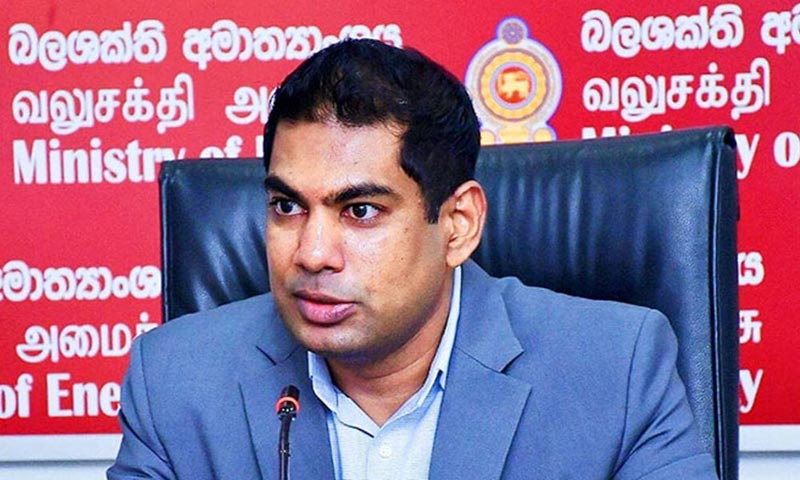Wednesday Nov 19, 2025
Wednesday Nov 19, 2025
Monday, 12 February 2024 04:09 - - {{hitsCtrl.values.hits}}

Power and Energy Minister Kanchana Wijesekera
Power and Energy Minister Kanchana Wijesekera dismissed claims by the Verité Research Institute that Sri Lanka has the highest electricity tariff in South Asia.
Holding a special media briefing on Saturday, Wijesekera vehemently disagreed with the facts presented and expressed intention to report the matter to the relevant institution for further investigation.
“We agree that our electricity tariffs are high, but the report has been prepared based on facts to mislead the public. The institution claims that the report was based on electricity usage of over 100, 300 and 500 units per month. However, in Sri Lanka, we only have less than 500,000 electricity users in this category. Thus, there is a clear doubt if these organisations are conducting
such surveys ahead of elections under the influence of certain group of people,” the Minister claimed.” the Minister claimed.
He also spoke about the outcomes of the recent official visit to India and plans for the development of power and energy development in the country.
The Minister pointed out that Sri Lanka’s power plants are not efficient hence the cost is high.
“Except for the hydro and coal power plants, most of our fuel-run facilities are running at a high cost. To generate a unit, it costs about Rs. 60-65, while there are also some which cost about Rs. 117. Therefore it is necessary to expedite the process to build new renewable or LNG power plants to gradually reduce the reliance on these high-cost power plants,” he added.
Addressing concerns about electricity affordability, Wijesekera outlined strategies to reduce electricity bills and streamline the workforce in the electricity sector. Digitising payment systems is among the proposed measures to improve efficiency and convenience for consumers.
He also cited the political and operational challenges faced during the implementation phase of the power generation plan which caused either delays or financial hardship as a major reason behind the high electricity tariffs.
“One such project is Uma Oya, which was supposed to be included in the national grid in 2020. The delay of the project implementation per year is estimated at around Rs. 10 billion and had it been completed in 2020, the cost of electricity would have come down drastically over the past four years,” he explained.
Furthermore, Wijesekera discussed plans for the Siyambalanduwa Underground Solar Panel Project, which aims to harness solar energy to meet local electricity demands sustainably.
Minister Wijesekera disclosed that negotiations with India to secure a supply of LNG are being pursued, offering a cleaner and more sustainable energy source for Sri Lanka’s power generation needs.
“The Indian Government has proposed to the Government a willingness to provide a temporary solution to the LNG requirement of the country within the next eight months and the discussions are ongoing,” he said.
He also highlighted the upcoming contract signing for the Sampur power plant in March, a crucial step towards boosting the country’s power generation capacity. The development of Trincomalee oil tanks is also on the agenda, presenting opportunities for strategic storage and distribution of petroleum products particularly for ships passing through.
In addition to these domestic initiatives, the Minister said efforts are being made to attract international investors for oil and gas exploration projects in Sri Lanka. “This reflects a broader strategy to tap into the country’s natural resources and promote economic growth through energy sector development,” he added.
Moreover, the Minister emphasised the need for legislative reforms, including the introduction of a new Electricity Act, to modernise the regulatory framework governing the energy sector and adapt to changing dynamics.